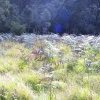1830s
1830
1831
Blanket distribution in Brisbane Waters and Gosford. Numbers 67.
Anonymous letter to the Sydney Gazette “…People should be employed to take a circuit about ten or fifteen miles around the establishment erected for the Aborigines; to conciliate themselves with the natives, particularly to find out which of those have children and to induce them to come to the establishment to convene with the missionary.” (Sydney Gazette, 17 Mar 1831)
1832
There are 76 land grants with a total area exceeding 9,000 hectares made to 67 settlers on the Central Coast. Prospects for farming are limited due to the rocky nature of the land; it is more profitable to cut timber and gather shells from Aboriginal middens for burning into lime to make mortar for Sydney buildings. Aboriginal burials are sometimes hidden in middens. No regard is taken of these sites and desecration takes place at the settlers’ will.
1833
Mrs Felton Mathew, on a visit to Marramarra Creek with her surveyor husband on 3rd August writes “then appeared a miserable hut of rough logs covered with bark, from whence issued a number of dogs barking … and then the inhabitants; two old men and a woman with child in her arms … These dreary solitudes might serve for the abode of a misanthrope so utterly are they secluded from all approach and so entirely destitute of all comfort”. (Richmond 2003)
The Lewis family manages to elude the Missionaries who are rounding up Koories in Sydney town. Despite the negative report about the Lewis family, the photograph of them on Marramarra Creek (probably taken at the mouth of Marramarra Creek at the home of Thomas Lewis some years later), reveals a well clothed and happy-looking large family.
1834
1835
Central Coast Aborigines including Jack Jones, Jago and Nimbo attack a settler’s hut near Wyong. Jack Jones escapes, while three men are taken to Sydney goal. “At Duralong (Wyong), Constable Moses Carroll [and his men] … were concealed in Adam Riley’s hut … for the purpose of apprehending some of the black natives concerned in the late robberies … they entered the hut … the blacks being so resolute and seizing hold of their firearms … they (Constables) were obliged in self defence to fire at Jack Jones who is a very powerful man, and wounded him in the neck. … During the scuffle, three made their escape.” Nimbo and Jago seized a constable at the lock-up and Jack Jones escaped. (Letter by Magistrate Bean 1835)
Sydney Criminal Court, Criminal Sessions – the following prisoners placed at the bar to receive sentences. Long Dick, Jack Jones, Abraham and Gibber Paddy, Aboriginal natives, convicted of robbery and outrages on the estate of Mr. AH Jacques at Brisbane Waters. (Sydney Gazette, 19 May 1835)
Criminal Court Sydney. Five Aborigines of the Brisbane Water clan named Whippem-up, Carning-bong, Jemmie, Tom Jones and Monkey or Toby were severally convicted of felony. Elizabeth Jones better known as the Morning Star was convicted of manslaughter to be transported seven years.
Liggamy, a Koori man is convicted of stealing a pipe and sentenced to seven years gaol.
Little Dick, an ‘Aboriginal native’, is convicted of robbing the dwelling house of Mr William Bloodstock. Death of another Koori is recorded. (Sydney Gazette, 14 Feb 1835)
Mickey and Merjey are charged with committing rape on Margaret Hansball. (Sydney Gazette, 14 Feb 1835)
1835 - 1861
The Oliver family on a farm in Elvina Bay (then Lovett Bay) recall “blackfellows who stole (or as they called it ‘bandicooted’) a whole paddock of potatoes”. Mrs Oliver would place an old musket at the open door to warn the Koori people away. The raiding of farms continues into the 1860s. (Swancott 1968)
1836
Bowen (Toura Bungaree) and his wife Maria, and daughters Jonza, Nan, Theda (Jane), and son Mark, move to Pittwater, near Barrenjoey. Bowen has perhaps decided to lead his clan away from the destruction and poverty of Sydney life back to a semi traditional existence.
Bowen may also have been disappointed in British justice. Bowen had requested the Reverend Threlkeld to make representation to the NSW Attorney General for the unsuccessful prosecution of two Aboriginal men, Murrell and Bummaree for the murder of his brother-in-law Jabinguy and another man. His appeal to the Attorney General was unsuccessful. Bowen returned to find his country much altered with traditional coastal fishing grounds blocked off to them and borders from farms and roads.
Bowen and other members of his clan find work employed as black trackers and also catch and trade fish with settlers. He works beside Customs Officer Howard and is friends with local farmer John Farrell. He is described as a valuable asset to the force. The Sydney Herald reports that Bowen has given information that leads to the capture of three bush rangers. “A black fellow named Bowen told Brophy that the other bushrangers were on another island near Mooney Mooney Creek”. (Sydney Herald, 17 April 1837)
Bowen is a very effective black tracker in detecting illegal stills in the upper reaches of McCarrs Creek, Church Point. He leads John Howard from the Customs House at Barrenjoey, Pittwater, up the creek to where a man William Farr is detained. Howard recognizes Bowen’s skills and recommends to the Collector of Customs in Sydney that he should ”have a second boat which would cost about four hundred pounds and enable him to get a living for himself and family consisting of two daughters and a son. … as he will be liable to insult and oppression for having aided me”. Later Howard writes “I am reluctant to employ (Bowen) … without the protection of a constable as I have reason to believe that violence would be used towards him.” (Archives Office of NSW Reel 4/2723)
1837
William Govett travels to the Northern Beaches to make a government report. He describes Koori people fishing from headlands, “With only simple tackle, the Aborigines could catch as many fish as they needed … One Aboriginal caught 8 snapper in less than half an hour”. Govett borrows a line from the man and soon snags it on a rock. The man responds “I believe you hook him rock, murray (very) stupid you”. (Govett 1977)
The (Sydney Gazette, 2 Feb 1837) reported that Bridget Riley
an Aboriginal native arrayed in a robe of spotless white, which contrasted strongly with her skin, was charged with having suffered from the influence of ‘bool’: she stated that she sat down [lived] at Broken Bay, to which place she was ordered to betake herself with all speed, and not be again seen drunk in the streets of Sydney.
(As well as a traditional intoxicant, water used to flush out empty rum barrels and given to Koories was also known as ‘bull’). (Sydney Gazette, 2 Feb 1837)
1838
1839
Letter to the Editor, Sydney Gazette.
Sir, the death of an aborigine on Wed last on the North Shore in open bush, induces me to enquire whether the Protectors of Aborigines have taken any measures to discuss and attend to cases of sickness amongst the black population in the neighbourhood of these towns where the police and medical establishments afford so many facilities. The poor creature “Whippem-up” or Newton … lay for some days with no shelter from the late rain storms under some sugar bags. He was attached to the Bungaree Tribe having originally been brought from Broken Bay by a gentleman named Newton. … When Bungaree … fell sick … he was not received into the hospital till an order had been received from the Colonial Secretary. (Sydney Gazette, 20 April 1839)











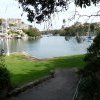
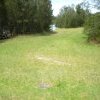

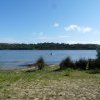
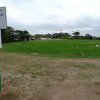
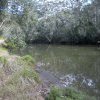

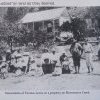
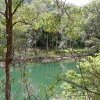
 drawn by Mikhailov, 1820, courtesy AIATSIS.thumbnail.jpg)
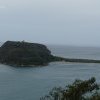

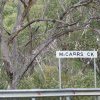
 to drink.thumbnail.jpg)
